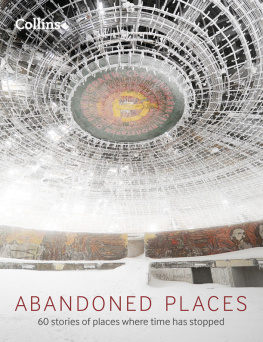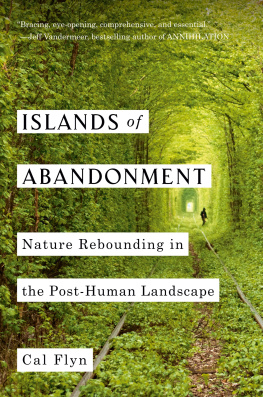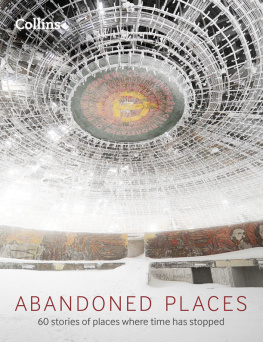CONTENTS
Places listed chronologically by the approximate date by which they became abandoned
DATE ABANDONED: AD 663
TYPE OF PLACE: City
LOCATION: Jordan
REASON: Environmental/Economic
INHABITANTS: 20,000
CURRENT STATUS: UNESCO World Heritage Site
THREE CENTURIES BEFORE CHRISTS BIRTH, A TRIBE OF NOMADS DECIDED TO CUT THEMSELVES A CITY FROM BARE ROCK. ABANDONED AND LOST FOR A MILLENNIUM, THEIR CAPITAL WAS REDISCOVERED IN THE NINETEENTH CENTURY AND IS NOW RECOGNIZED AS ONE OF THE WORLDS OUTSTANDING CULTURAL WONDERS.
The rose-red city half as old as time
It is called Petra in Greek and Sela in Hebrew; both mean rock and few places have as simple and as beautifully apt a name. For this city that once housed 20,000 prosperous souls was carved out of, and into, the red sandstone cliffs of a desert gorge over 2,000 years ago.
Most abandoned places have a short life. It is the very nature of their derelict existence: they have been let go, lost, left to the entropic power of nature. Petra, however, is almost as magnificent now as it was two millennia ago.
It is mentioned twice in the Bible and Arab tradition maintains that Petra is where Moses (Musa) struck his staff on a rock and water came forth. Even then it was a wonder: one of the wealthiest cities in the ancient world flourishing in one of the harshest climates on earth. Today it is a magnificently preserved picture of an ancient civilization and a thrilling reminder that not everything we abandon need be lost.
The wanderers settle down
The Nabataeans were originally nomadic spice traders of the south Levant and north Arabia. They controlled a loosely structured trade network with oases as hubs linked by caravan routes through the surrounding desert.
Around 300 BC, they decided to develop a more state-like kingdom and swiftly constructed Petra as their capital city. The fortress-like location of towering rocks and narrow gullies certainly made for a wonderful defensive site, but there was one major problem: water.
Water management
It may be surrounded on all sides by dry, searing desert, but Petra owes its existence to water. Or rather, to the skill and ingenuity of the Nabataeans in gathering that most precious of commodities and bringing it to their city. When rain does fall here, it creates flash floods that rip through the landscape, carving its distinctive gullies and gorges. For most people that rain would be too rare and too destructive to be of any use.
The Nabataeans thought differently, and they built an ingenious system of conduits, dams, cisterns and pipes to channel and store the rain and spring water from a wide area. This vast plumbing network turned a meagre 15 cm (6 inches) of annual precipitation into a constant water supply that could deliver an estimated 12 million gallons of fresh water a day. In effect, they had created an artificial oasis. Its water supported the people of Petra and was vital to travellers, which helped make the city rich.
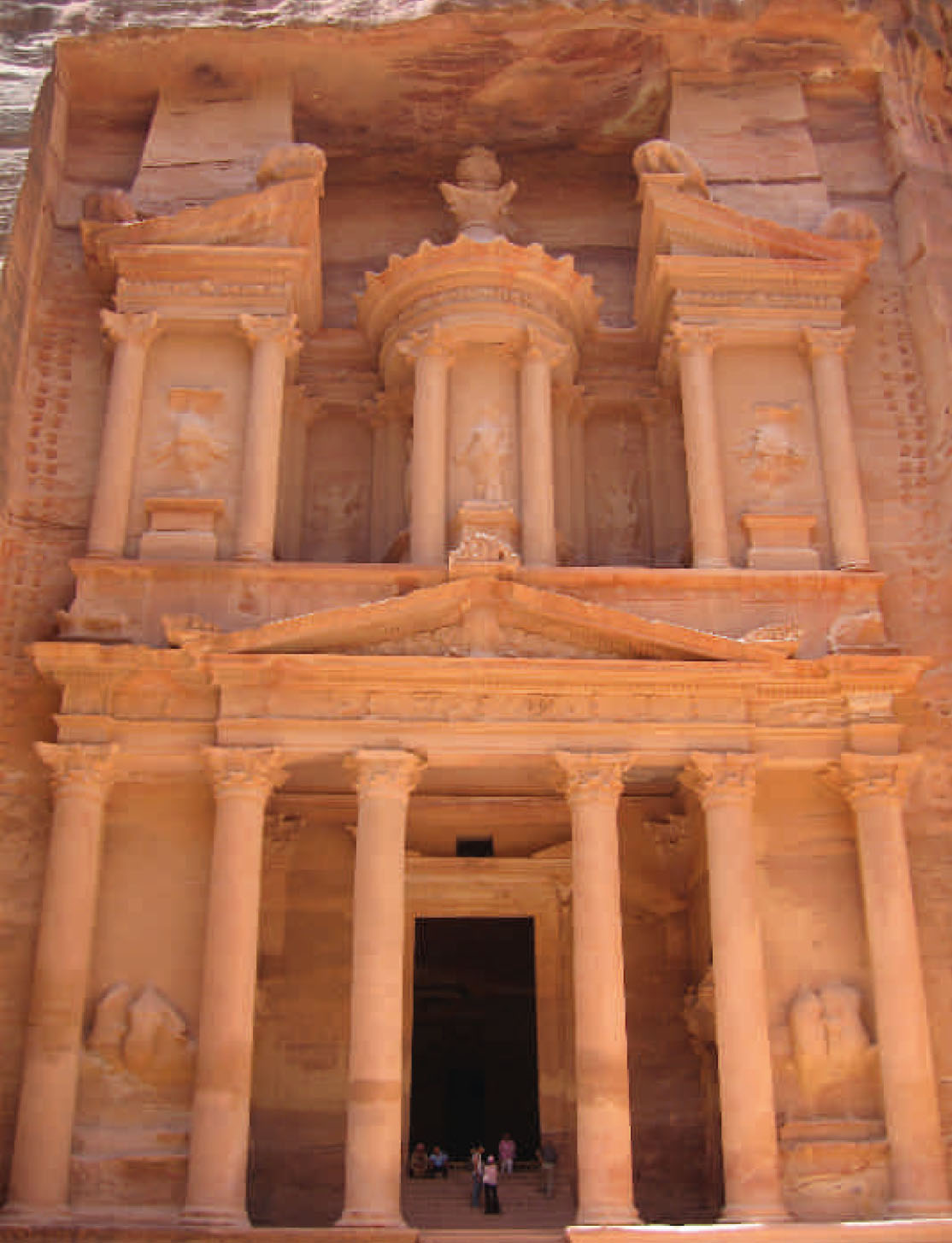
The faade of Al Khazneh (The Treasury) is 40 m (131 ft) high. Its position deep in a gorge has helped protect it from erosion.

The Urn Tomb, first of the Royal Tombs, is built high up on the mountain side.
Petra was located at the junction of a trade route to Asia and another to Arabia. These were the motorways of their day, along which caravans of 2,500 camels, up to 8 km (5 miles) in length, carried spices, cloth, ivory, metals and incense such as frankincense and myrrh. Petra was an ideal rest and refreshment point for these travellers and, as with any service station, the Nabataeans ensured they profited from their visitors.
By 100 BC the Nabataeans had control of the spice trade and they used their burgeoning wealth to expand their remarkable city. Petra became a metropolis of temples, monuments, altars, houses, and banquet halls carved into the sandstone cliffs. There are 3,000 carved tombs and the open-air theatre could seat 8,000 people.
The rock shakes
Like all empires, the Nabataean dynasty eventually had its fall. Petra was taken within the arms of the Roman Empire in AD 106 and at first flourished in the relationship; the city was at the height of its wealth and influence around AD 200. However, the city of Palmyra gradually drew Arabian trade away from Petra, which declined as a trading hub.
In AD 363 there was a cataclysmic earthquake that cracked beautifully carved facades, brought rocks tumbling from walls and fractured the seats in the theatre. Although people continued to live here, the city never fully recovered from this shock.
By the fifth century the Nabataeans had converted from their own faith to Christianity and Petra became a renowned religious settlement within the Byzantine realm. But by AD 663 even the pilgrims had ceased to come and the city was deserted.
The city lives again
The city slept in its desert canyon for nearly a millennium, forgotten by the wider world. It was rediscovered by an adventurous 27-year-old Swiss traveller, Johann Ludwig Burckhardt, in 1812. He spent years learning fluent Arabic and had disguised himself as a Bedouin to explore as far off the beaten track as possible. Tales of the lost citys mystical beauty captured the Victorian imagination, and it was famously described as a rose-red city half as old as time in a poem by John William Burgon.
In the First World War, Petra was at the centre of an Arabian revolt against the Ottoman regime. British Army officer T. E. Lawrence, better known as Lawrence of Arabia, helped drum up support amongst the Bedouins living in the area to rout the Turkish forces.
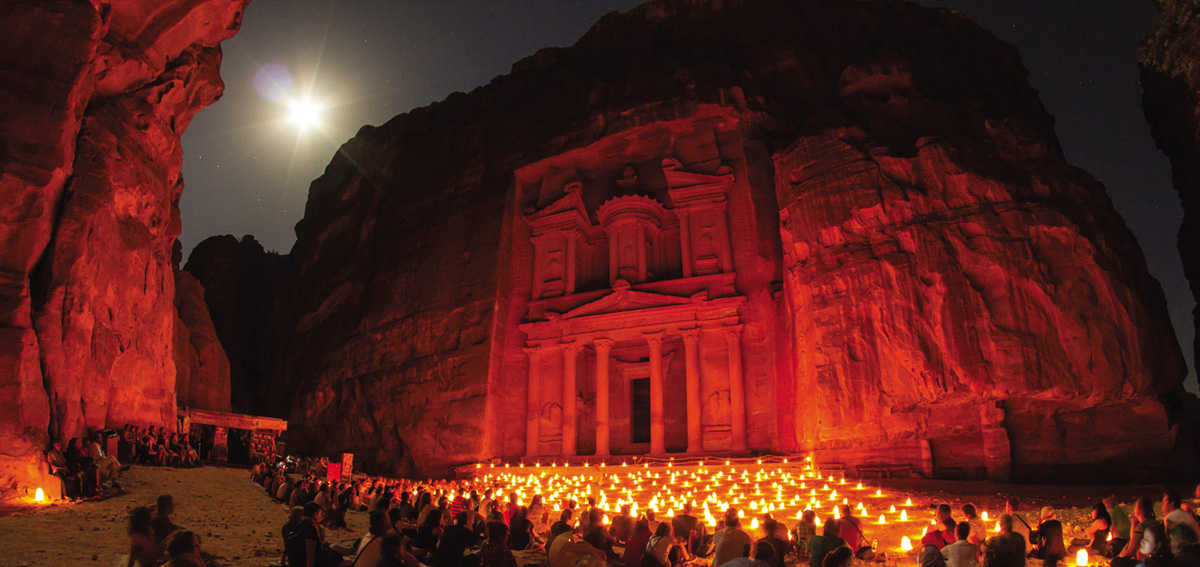
The Treasury by night. Behind the facade is a large square room; Indiana Jones found the Holy Grail inside.
Exploring the site
Few cities on earth have as spectacular an entrance as Petra. It is approached through the Siq, a sinuous gorge that snakes for 1.2 km (0.75 miles) between gloomy cliffs up to 182 m (597 ft) high. In some places the Siq (meaning the Shaft) is only 3 m (9.8 ft) wide, but this split in the mountain is the main way of accessing the city.
Visitors pad through the sandy darkness to finally emerge in a blinding cathedral of light and come face to face with one of Petras most famous monuments: Al Khazneh (The Treasury). This was not a place of business, but rather a crypt built around the time of Christ. It later got its name from a story about bandits who had hidden gold in one of the urns carved high on the facade. Today this urn is pocked with bullet holes made by Bedouins trying to shatter it and release the treasure. In fact, the urn is solid sandstone. The Treasurys huge pillars and pediment are of Greek influence in their design, like many of the buildings in Petra.
Another spectacular carved building is the monastery (actually a temple), which is cut into a hilltop an hours climb from the main city. The scale of the stone-carving here is truly awe-inspiring: the monasterys huge facade is 50 m (165 ft) square and its doorway is as tall as most houses.

